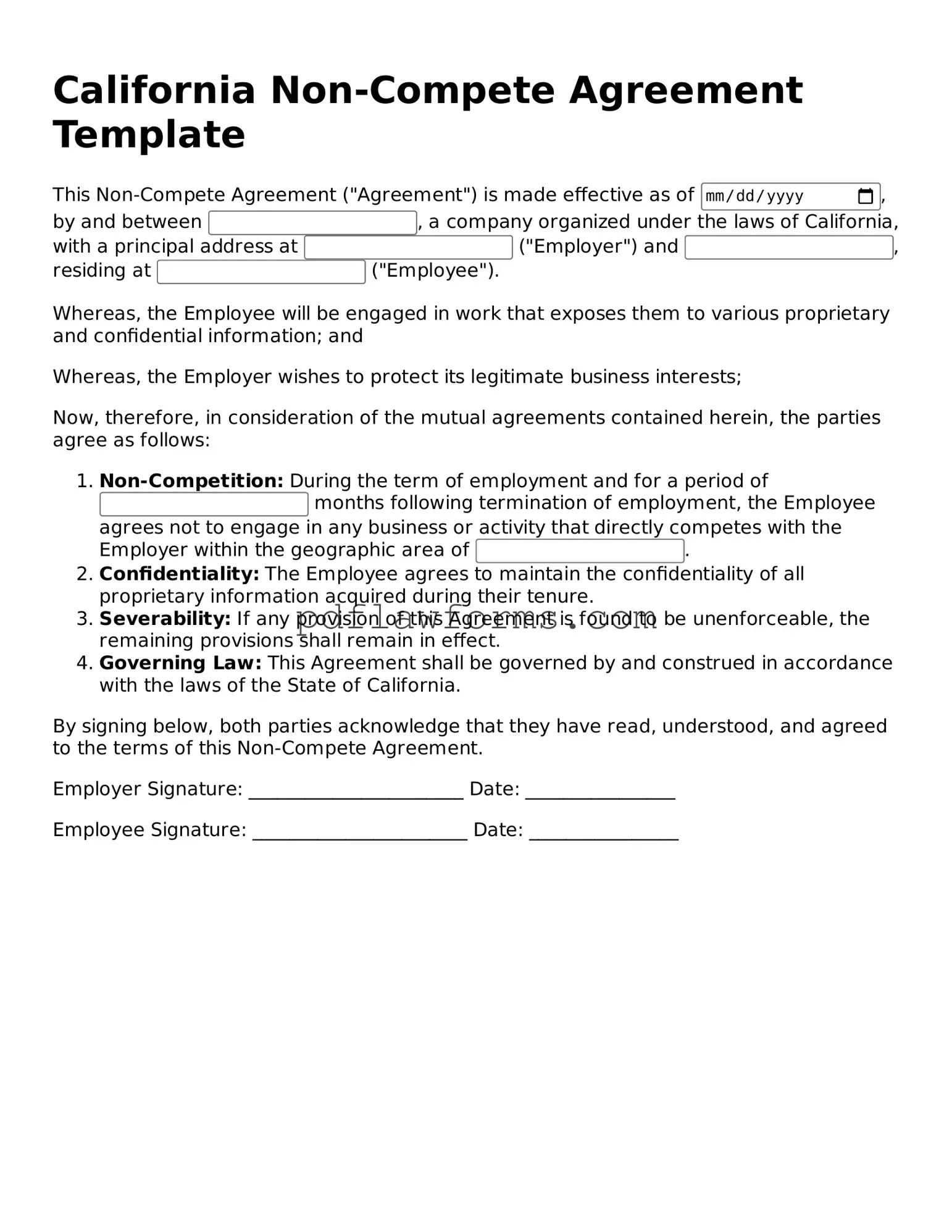Filling out the California Non-compete Agreement form can be a straightforward process, but many people make common mistakes that can lead to confusion or issues later on. One frequent error is not understanding the purpose of the form. Non-compete agreements are designed to protect business interests, but California has strict laws regarding their enforceability. Many individuals mistakenly think they can impose broad restrictions on employees, which is often not the case.
Another mistake is failing to specify the duration of the non-compete clause. Without a clear timeframe, the agreement may be deemed unenforceable. It's essential to define how long the restrictions will apply. Many people overlook this detail, thinking that a vague timeline will suffice. However, clarity is key in legal agreements.
Some individuals also neglect to include geographic limitations. A non-compete agreement should specify the areas where the restrictions apply. Omitting this information can render the agreement too broad, making it difficult to enforce. It's crucial to define the geographical scope to avoid potential legal challenges.
In addition, many people forget to consider the nature of the business. The agreement should reflect the specific industry and the type of work involved. Failing to tailor the agreement to the business can lead to complications. Each business is unique, and a one-size-fits-all approach rarely works.
Another common error is not reviewing the agreement with legal counsel. While it may seem like an unnecessary step, having a professional review the document can prevent future issues. Legal experts can provide valuable insights and ensure that the agreement complies with California laws.
People often misinterpret the consequences of violating a non-compete agreement. They may think that breaching the agreement will only result in a minor inconvenience. In reality, violating such an agreement can lead to significant legal repercussions, including financial penalties. Understanding these consequences is crucial for both employers and employees.
Additionally, some individuals mistakenly believe that a non-compete agreement can be enforced indefinitely. In California, the law typically limits the enforceability of these agreements. It's important to be aware of these limitations to avoid drafting an agreement that cannot be upheld in court.
Another mistake is not discussing the agreement with all parties involved. Communication is vital. If employees are not aware of the non-compete agreement or its implications, they may inadvertently violate it. Ensuring that everyone understands the terms can help prevent misunderstandings.
Finally, people sometimes forget to keep a copy of the signed agreement. Documentation is essential in any contractual relationship. Without a copy, it becomes challenging to enforce the agreement or prove its existence. Always retain a signed version for future reference.
